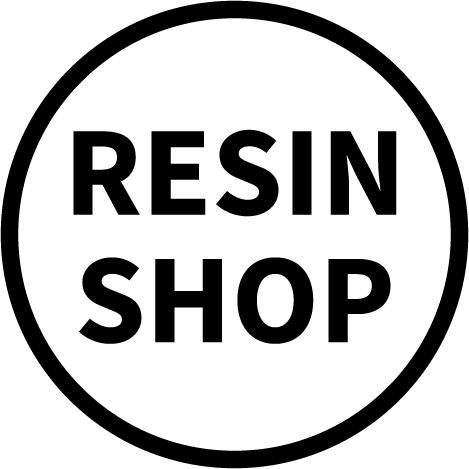Looking for Help?
Find answers to your questions
- Common Difficulties with Epoxy Resin
- Common Mistakes When Using Epoxy Resin
- Getting Started with Epoxy Resin: A Beginner’s Guide
- How to Create a Safe Working Environment for Epoxy Resin
- How to Seal a Surface Before Pouring Epoxy Resin
- Is It Necessary to Seal Before Using Epoxy Resin?
- Surfaces That Require Extra Preparation When Using Epoxy Resin
- Tips For Using Resin Shop Epoxy Resin
- Creative Techniques for Working with Epoxy Resin
- Epoxy Resin Ideas for Children
- How Epoxy Resin Is Used to Restore Old Wooden Furniture
- How to Create 3D Effects with Epoxy Resin
- How to Create a River Table with Epoxy Resin
- How to Create Epoxy Resin Coasters
- How to Create Epoxy Resin Jewellery
- How to Create the River Effect with Epoxy Resin
- How to Use Epoxy on a Concrete Floor
- How to Use Epoxy Resin on a Painting Canvas
- Advantages and Disadvantages of Using Pigments with Epoxy Resin
- Characteristics of Alcohol Ink Pigments with Epoxy Resin
- Characteristics of Pearl Pigments (Mica Pigments) with Epoxy Resin
- Most Common Pigments Used with Epoxy Resin and Their Effects
- Tips for Blending Alcohol Ink and Pearl Pigments with Epoxy Resin
- Tips for Using Alcohol Ink Pigments with Epoxy Resin
- Tips for Using Pearl Pigments (Mica Pigments) with Epoxy Resin
- What Can Cause Epoxy Resin to Crack Once Cured?
- What Causes Epoxy Resin to Have a Milky or Cloudy Appearance?
- Why Dimples and Soft Spots Occur in Epoxy Resin Once Cured
- Why Do Bubbles Appear in Epoxy Resin?
- Why Do Swirls Appear in Epoxy Resin?
- Why Epoxy Resin Doesn’t Fully Cure
- Why Epoxy Resin Isn’t Clear Once Cured
Surfaces That Require Extra Preparation When Using Epoxy Resin
Epoxy resin is a versatile material, but not all surfaces are suitable for direct application. Some surfaces may require special preparation, while others may not be ideal for epoxy use. Here are the key surfaces that require extra caution:
🪵 Unsealed or Untreated Wood
- Issue: Natural wood contains moisture, oils, or contaminants that can interfere with bonding and curing.
- Solution: Apply a sealing coat before using epoxy to ensure strong adhesion and prevent air bubbles.
- Look for our Timber Clear Premium Timber Sealer, Primer & Topcoat
🌀 Flexible or Bendable Surfaces
- Issue: Epoxy resin is rigid once cured and not designed to flex. It may crack or peel when applied to:
✅ Rubber
✅ Stretchable fabrics
✅ Certain plastics - Solution: Avoid using epoxy on surfaces that bend, twist, or move frequently.
🪟 Non-Porous Surfaces (Glass, Metal, Certain Plastics)
- Issue: Epoxy resin adheres best to porous surfaces. Non-porous surfaces may cause poor bonding or peeling.
- Solution: Improve adhesion by:
✅ Lightly sanding the surface
✅ Applying a primer or adhesion promoter
🔥 High-Temperature Surfaces
- Issue: Epoxy has temperature limits. Exposure to heat sources can cause softening, warping, or degradation.
- Solution: Check the manufacturer’s specifications and avoid using epoxy on:
✅ Hot countertops near stoves
✅ Engine parts or high-heat appliances
🖌️ Surfaces with Existing Coatings or Finishes
- Issue: Epoxy may not adhere well to surfaces with paint, sealants, or waxes, especially smooth or oily ones.
- Solution: Ensure proper adhesion by:
✅ Sanding or roughening the surface
✅ Cleaning off any grease, dust, or previous coatings
🍽️ Food Contact Surfaces
- Issue: Not all epoxy resins are food-safe for surfaces that touch food or drinks.
- Solution: Use only food-safe epoxy that complies with food safety regulations if working on:
✅ Cutting boards
✅ Tabletops or serving trays
🔍 Final Checks Before Applying Epoxy
✔ Read the manufacturer’s guidelines carefully.
✔ Conduct a small test area before applying epoxy to a large or important surface.
✔ Prepare each surface accordingly for best results.
Updated on 21 Mar 2025
What are your Feelings?
Thanks for your feedback
QUICK LINKS
Contact information
Copyright © 2025 Resin Shop Australia.Powered by Shopify
1 product
was added to your cart
was added to your cart
